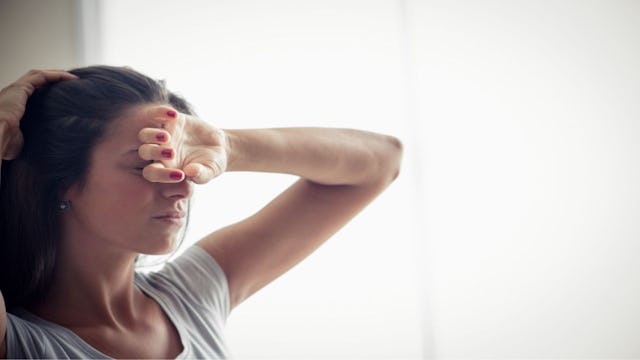My Doctor Told Me I Was A Hypochondriac When I Actually Had A Life-Threatening Illness

“I think you’re a hypochondriac,” the doctor sighed. Then, “Maybe it’s anorexia?”
I’d been sick for months, starting with a stomach virus over Thanksgiving break. I was running ragged, knee-deep in my first semester of teaching writing to college freshmen while also taking grad school classes.
The virus was an inconvenience, a bump in the road — or so I thought.
The next sixteen months proved to be one of the most confusing and depressing seasons of my life. Not only did I not gain back the few pounds I’d lost while sick, but my weight was dropping rapidly. Yet, I was eating and drinking. My hunger and thirst were insatiable. I also had chronic sinus infections, taking one round of antibiotics after the next. My vision was blurry, it hurt to sit but also stand, and I was exhausted from the smallest task. Even getting in and out of my car fatigued me.
I visited my doctor, yet again, desperate to find out why I was so sick all the time. But it was my fifteenth visit to him, and he was clearly annoyed and exasperated. So he threw out two possibilities, hypochondria and anorexia, neither of which I knew were accurate.
I went home that day, crawled into my bed, and sobbed. My wedding photo was sitting on my night stand in a silver, scrolly frame. I looked so happy, so vibrant. I missed that woman. Where was she?
On one of my at-home Fridays, I desperately needed to grade forty student essays. Instead, I guzzled an orange shake and curled up on the couch. I was exhausted and it was only 11 a.m. I remember hearing my cell phone ring, but I was too tired to pick it up. I drifted in and out of sleep for hours until I finally picked up my cell to stop the relentless ringing. It was my husband.
He had been trying to call me for hours and knew something was wrong. I couldn’t catch my breath. I was shaking. He rushed home from work, put me in the car, and drove me to the emergency room.
I finally received a diagnosis of type 1 diabetes — a chronic autoimmune disease. I’d arrived in the ER in a state called DKA, or diabetic ketoacidosis, from being insulin deprived for so long. DKA is dangerous, and if left untreated, is deadly. My body was toxic and shutting down.
I was rushed to the ICU and hooked up to tubes and wires. For days, doctors and nurses came into my room, telling me they were astounded I was alive. My blood sugar was 700 upon admission, seven times the norm. One nurse patted my frail, bruised arm and said, “You could have died.”
After I was released from the hospital and resumed my new-normal life, I left the doctor who failed to diagnose me. I considered filing a negligence lawsuit against him, but ultimately decided I only had so much fight in me. I needed to channel that energy into battling my disease. Of course, I found a new (and much better) doctor.
Here’s what is shocking. Type 1 diabetes is very simple to diagnose. All it takes is a simple blood test. Yet, despite my sixteen months of illness and classic diabetes symptoms, I wasn’t believed. Instead, the doctor suggested that my sickness was made-up, a created narrative.
It happened again twelve years later.
The pain in my breast and palpable lump were concerning. Every time I pulled the seat belt across my chest or put on my cross-body purse, the soreness amplified. I made an appointment with my gynecologist who ordered an ultrasound and mammogram.
Two days after I had the imaging done, the office called to give me the radiologist’s report. He determined that I was fine. Yes, there was a mass, but we should monitor it. I should go back for more imaging in six months.
I couldn’t let go of the nagging feeling that the radiologist was wrong, so I sought a breast surgeon on my own and asked for a biopsy. She agreed, and three weeks later I received my second diagnosis. I had breast cancer.
I immediately transferred hospitals and doctors. I was given two options: a bi-lateral mastectomy or a lumpectomy and radiation. I chose the mastectomy, with the support of my new doctor. At age thirty-six, I became part of the 5% of women under the age of forty to be diagnosed with breast cancer. Thankfully, I finally found a doctor who believed me.
Twice, doctors didn’t believe me. I said something was wrong, and I asked for their professional help. I pleaded for a diagnosis, and I didn’t receive an answer until I was in a dire situation. Was it because I simply had bad luck? Or was it sexism? Both doctors who misdiagnosed me were men, and perhaps I was viewed as the pesky, neurotic female patient. I’ll never be certain.
I encourage women to speak up, and when they are not listened to, to speak louder and, if at all possible, get a second opinion. These are our bodies and our lives. Not every doctor is a good doctor or the right doctor. Not every conclusion is the correct one.
Speaking up can mean the literal difference between life or death.
This article was originally published on